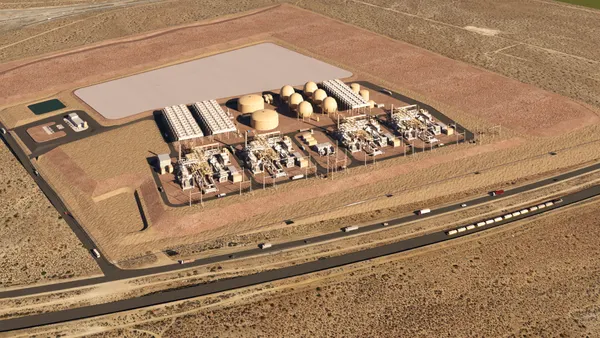Dive Brief:
- Long-duration energy storage provider ESS Tech has delivered six energy storage systems, totaling 3 MWh, to California electric provider Sacramento Municipal Utility District, the company announced Monday.
- The six systems are the first delivery in a broader deal, announced last year, under which ESS will provide up to 200 MW/2 GWh of iron-flow long-duration energy storage systems to SMUD. The company estimates that these systems will reduce the utility’s carbon emissions by 284,000 metric tons per year.
- ESS iron flow technology’s 10- to 12-hour duration was an important factor for SMUD, Chief Zero Carbon Officer Lora Anguay said. “It really complements renewable resources here at SMUD that we’re looking at installing,” including utility-scale and behind-the-meter solar, she added.
Dive Insight:
SMUD is aiming to deliver entirely carbon-neutral electricity by 2030, 15 years ahead of California’s 2045 goal of achieving 100% zero-carbon power. The utility included the commitment in a climate emergency declaration approved in mid-2020. Also in 2020, SMUD entered into its multi-year agreement with ESS for the latter’s long-duration storage systems.
The first set of systems delivered by ESS has been installed and connected into SMUD’s system at its head training facility, Anguay said. Now, the utility will focus on integrating the systems into its clean energy portfolio. Once the systems are operational, it will also work on training its staff on utility-scale applications and dispatching long-duration battery systems.
SMUD plans to have these batteries fully operational by this fall, Anguay said. The next set of deliveries under its deal with ESS is expected to begin coming in at the tail end of next year.
Iron-flow battery technology offers power providers certain advantages, including safety aspects, according to Hugh McDermott, ESS’ senior vice president of business development and sales.
“So all of the associated perceptions and risks of lithium-ion battery safety don’t really apply in our case,” he said.
In terms of duration, the technology currently has a sweet spot of around eight to 12 hours.
But while multiple “mega-trends” — including the impacts of climate change, adoption of renewables and growth of electrification — are driving the need for long-duration energy solutions, the U.S. has more work to do in terms of properly compensating these assets, McDermott said.
Even in California, where the need for long-duration storage has been widely recognized, “there’s still some market reform and some incentives to better or more properly compensate long-duration energy storage assets, for companies like SMUD as well as the private investment community who builds those projects and operates them,” he said.
One example of a need that everyone acknowledges, but isn’t directly monetizable evenly in all markets, is resiliency, he added. California has a resource adequacy market that currently favors a four-hour storage duration, he said, but “it’s not quite remunerative enough for people to make the investment … for an eight-hour battery. At least not with newer technologies that are still early in their innovation [and] manufacturing scale-up, where the costs are a little bit higher.”
ESS and SMUD also intend to establish a “Center of Excellence” for energy storage manufacturing in Sacramento, which will provide workforce training in collaboration with educational institutions in the area.














